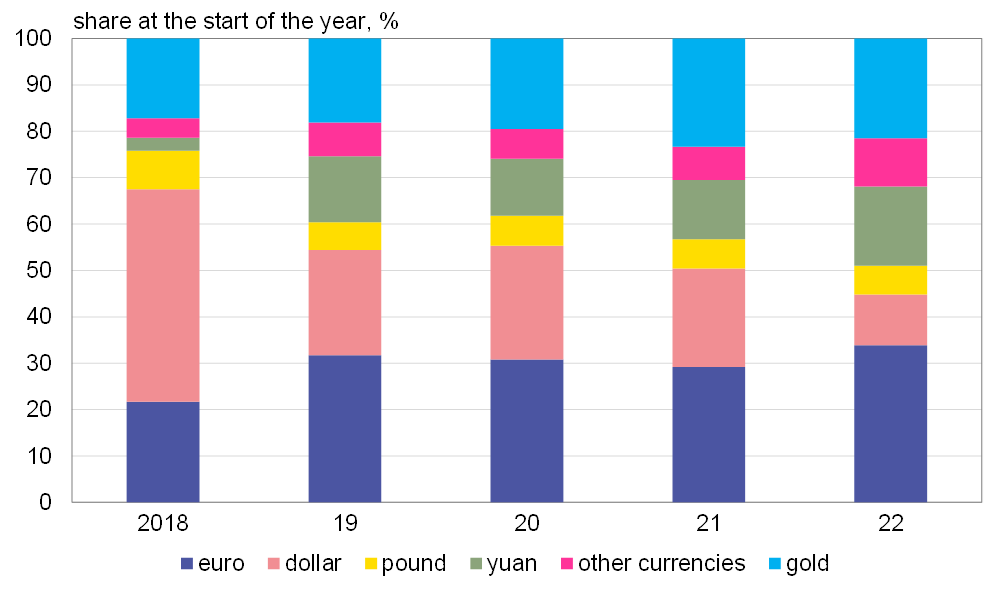BOFIT Weekly Review 15/2022
No growth this year for Russia’s foreign reserves or the National Welfare Fund
Russia’s foreign currency and gold reserves experienced gradual growth still in 2021 as the central bank made currency purchases on behalf of the finance ministry based on the government’s fiscal rule. Under the government’s fiscal rule, when the price of oil has exceeded the rule’s rather low reference price, excess oil & gas tax revenues have been set aside on a current basis and converted into foreign currencies, and eventually deposited in the National Welfare Fund (NWF). This arrangement has been in place for several years. In late January the CBR suspended these forex purchases, referring to the need to reduce financial market volatility.
With Russia’s attack on Ukraine in late February, the EU, US and UK, among others, prohibited transactions with Russia’s central bank, effectively blocking the CBR from operating with its currency reserves. This is especially because a large chunk of Russia’s foreign currency reserves is held in euro- or dollar-denominated assets. Euro-denominated assets rose by the start of this year to over a third of the reserves, their highest share ever. The US dollar component shrank considerably last year, standing at just over 10 % at the start of this year. The share of China’s yuan jumped to more than 17 %. Gold continues to account for almost 22 % of reserves. After several years of CBR gold-buying, the quantity of gold in the reserves remained quite steady last year.
Russia’s currency reserves have not increased this year. In dollar terms, the value of the reserves has fallen slightly, standing at 606 billion dollars as of April 1. Part of the decline represents the slight drop in the value of the euro relative to the dollar.
The NWF’s liquid assets are part of Russia’s foreign currency reserves. The liquid assets have remained quite steady this year at around 115 billion dollars (also as of April 1), or about 7.5 % of 2021 GDP. In addition, there is a considerable amount of oil & gas tax revenues accumulated last year which according to normal practice under the fiscal rule would be transferred to the NWF later this year.
Last week the government decided that, instead of the fiscal rule mechanics, forex and gold purchases could be this year done more flexibly as the finance ministry sees fit. Last week the government further confirmed the policy shift that part of the excess oil & gas tax revenues no longer have to be saved for the NWF but can be used to cover government expenses. In late March, the finance ministry informed that the government could, as needed, use the NWF’s forex and gold assets. This would happen by converting the assets into rubles via mutual arrangements between the finance ministry and CBR without having to resort to market operations with the forex reserves.
The euro and yuan components of Russia’s foreign reserves grew in 2021

Sources: Bank of Russia and BOFIT.